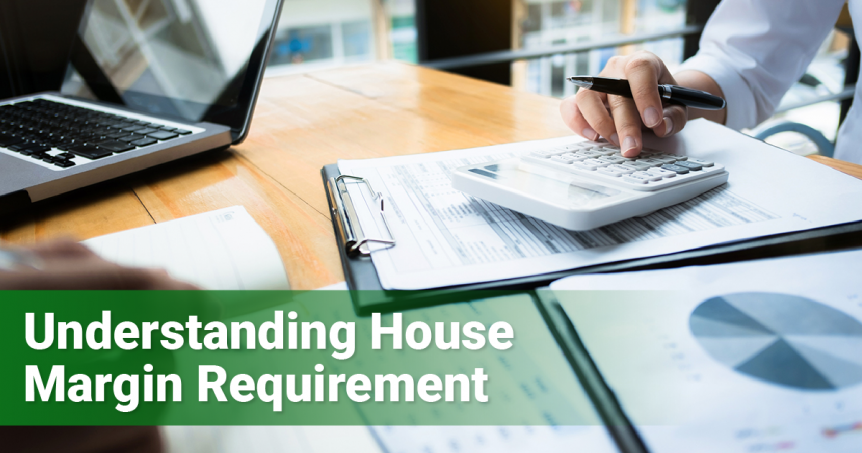When buying shares of a stock, you may occasionally receive an alert that reads something like this:
“You are attempting to purchase a security that may be held to a higher house margin requirement than most securities. If you have a Margin Account, this will be reflected in your Buying Power. Please Place Order to proceed.”
In the Snider Investment Method, positions with higher margin requirements do not affect our trading and you can disregard the alert.
What is a house margin requirement?
The house requirement is the amount of equity that you must have in the account in order to maintain the margin balance. In other words, it is the amount of collateral you must have in order to keep carrying your margin balance.
Starting out, you can usually borrow up to 50% of the purchase price of your investments, so with $50k, you can buy up to $100k worth of stock. The house requirement will vary from broker to broker, but it is usually around 30%. The amount you borrowed ($50k) stays the same, but if the price of your stock falls, so does the value of the collateral. If the value of the stocks drops below the 30% requirement, your broker will give you a margin call.
With a margin call, you must either deposit more cash to increase your collateral or sell shares. If the value of the stock drops to $70k, your equity is now $20k (70k value – 50k borrowed). With a margin maintenance requirement of 30%, you would need $21k of equity (70 X .30), so you would get a margin call for an additional $1k.
However, some brokers may look at certain positions that are more volatile and raise the margin requirements. Some positions could have a 50%, 75%, or even 100% margin house requirements. For positions that require 50% or 75%, you can only borrow up to a maximum of 50% and 25% respectively. Unlike other stocks, 50% and 75% is also the margin call threshold instead of 30%. As a result, if you borrow the maximum amount for a position with higher margin requirements and the position decreases in value, you may immediately receive a margin call. Positions with a 100% requirement cannot be purchased on margin.
How this affects you
In the Snider Method, we do not alter our trading for positions with higher margin. You can disregard the alert. This alert is not any type of signal whether this stock will be a good or bad position within the Snider Method.
If your account is not in margin, then this does not affect you. Even if you have a margin account, this just means the broker will require a higher amount of collateral for these shares if you are borrowing from the broker. Other trading strategies may look to maximize their leverage with margin, in which case you would have to monitor your positions and balances closely in order to avoid a margin call. Margin is only used very strategically within the Snider Method and rarely to full capacity.







